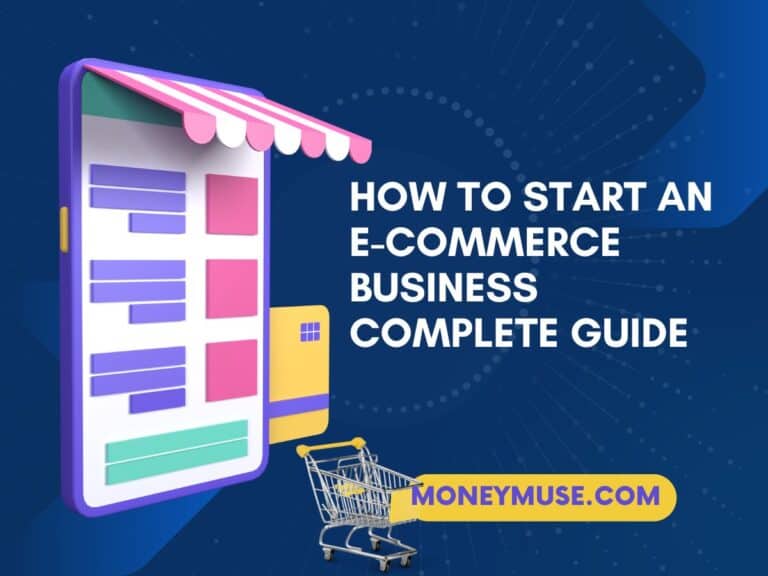Tips for Starting an eCommerce Business from Scratch
Embarking on the journey of starting an eCommerce business from scratch can be both exciting and overwhelming. With the ever-evolving digital landscape and the constant influx of new technologies, it can take time to know where to begin.
But, with the right mindset, strategy, and tools, you can turn your eCommerce dream into a reality. This blog post will take you through the ins and outs of starting an eCommerce business from scratch, providing you with actionable tips and strategies to help you launch a successful online store.
We’ll explore the various steps involved in starting an eCommerce business, from identifying a profitable niche to building a user-friendly website, setting up payment and shipping options, marketing your business effectively, and managing your inventory.
Whether you’re a complete novice or have some experience in the eCommerce field, this blog post will provide valuable insights and actionable tips to help you navigate the journey of starting an eCommerce business from scratch. So, let’s dive in and explore the world of eCommerce together!

I. Choosing a Niche & Researching competitors
When starting an eCommerce business, it is essential to identify a specific market to focus on. This is known as choosing a niche.
By selecting a niche, you can target a particular group of customers and tailor your products and marketing strategy to meet their needs. Researching your potential niche will help you understand your product demand and identify potential market competitors.
When researching your niche, you should consider the following questions:
- What are the current trends in your niche?
- Who are your target customers, and what are their pain points?
- What are the existing products and services in your niche?
- Who are your main competitors, and what are their strengths and weaknesses?
You will better understand the market and how to differentiate yourself from the competition by answering these questions. Once you have identified a niche, you can start developing your products and services that cater to the needs of your target customers.
Researching competitors will help you stay aware of industry trends and identify growth opportunities. You can learn from your competitors’ mistakes and capitalize on their weaknesses. It will also enable you to identify any gaps in the market that you can fill with your products or services. It will also assist in understanding the competitors’ pricing strategy and what you can offer to be price competitive.
In summary, choosing a niche is crucial in starting an eCommerce business. By identifying a specific market to focus on, researching competitors, and understanding the demand for your products, you can tailor your business to meet the needs of your target customers and stand out in the market.

II. Building Your Website
Once you have identified your niche and developed your products, it’s time to build your website. This is your business’s digital storefront and needs to be user-friendly, visually appealing, and optimized for search engines.
Several platforms are available for building an eCommerce website, including Shopify, WooCommerce, Magento, and BigCommerce. Each platform has its own set of features, pros, and cons.
Choosing a platform to build your website
It’s essential to research and compare the different options and choose the one that best suits your needs. You should consider factors such as ease of use, scalability, customization options, and the cost of the platform.
Designing a user-friendly and visually appealing website: Your website should be easy to navigate. A clean, straightforward design with a clear information hierarchy will make it easier for customers to find what they want.
Use high-quality images and videos to showcase your products and services. Also, ensure that your website is mobile-responsive, as many online shoppers use their mobile devices to browse and purchase products.

Optimizing for search engines
Search Engine Optimization (SEO) is crucial for driving traffic to your website. To optimize your website for search engines, you should ensure that your website is structured correctly, use relevant keywords in your content, and build backlinks to your website. You can also use tools like Google Analytics to track your website’s performance and adjust as needed.
In summary, building a website is essential in starting an eCommerce business. Choosing the right platform, designing a user-friendly and visually appealing website, and optimizing for search engines will help attract customers to your website, increase visibility and ultimately drive sales.
III. Setting up Payment and Shipping
Once your website is up and running, it’s time to set up payment and shipping options for your customers. This is essential in ensuring a seamless shopping experience for your customers.
Deciding on payment options for your customers
Several payment options are available for eCommerce businesses, including credit cards, debit cards, PayPal, and other digital wallets.
It’s essential to research and compares the different options and chooses the most popular with your target customers. You should also consider the cost of each option and how they integrate with your website.
Researching shipping options and finding the best rates: Shipping is another essential aspect of an eCommerce business. It’s important to explore different shipping options and find the best rates for your business. You should also consider the delivery times and how they align with your customer’s expectations.
Having a clear and transparent shipping policy on your website is also essential. This will help set expectations for your customers and reduce confusion. It’s also good to offer free or discounted shipping options to encourage more sales.
Setting up payment and shipping options is crucial in starting an eCommerce business. By deciding on payment options that are popular with your target customers and researching shipping options to find the best rates, you can ensure a seamless shopping experience for your customers and keep costs low for your business.

IV. Marketing Your Business
Once your website is up and running and you have set up payment and shipping options, it’s time to start marketing your business. This will help you attract customers and drive sales.
Developing a content marketing strategy
Content marketing is a great way to attract and engage customers. You can use blog posts, videos, infographics, and other forms of content to educate and inform your target audience about your products and services.
You should develop a content calendar and plan out the topics you will cover and the frequency of your content. This will help you stay consistent and on track with your content marketing efforts.
Utilizing social media to promote your products
Social media is a powerful tool for promoting your products and building customer relationships.
You should create profiles on the most popular social media platforms and use them to showcase your products, share content and engage with customers. You should also consider using social media advertising to reach a larger audience and drive more sales.
Utilizing email marketing and customer engagement
Email marketing is another effective way to reach and engage customers. You should collect email addresses from your customers and use them to send out newsletters, promotions, and other types of content.
You should also use email marketing to engage with your customers and ask for their feedback. This will help you build strong customer relationships and improve your products and services.
In summary, marketing your business is essential in starting an eCommerce business. By developing a content marketing strategy, utilizing social media to promote your products, and utilizing email marketing and customer engagement, you can attract and engage customers, build relationships and ultimately drive sales for your business.

V. Managing Your Inventory
Managing your inventory is a crucial aspect of running an eCommerce business. It is the backbone of your operations and can make or break your business.
Finding a reliable supplier
To have a consistent stock of products to sell, it is vital to find a reliable supplier. Your supplier should be able to provide you with high-quality products at competitive prices and deliver them on time.
It’s important to research potential suppliers, check their references, and visit their facility before deciding. Building a good relationship with your supplier will ensure that you have a steady stream of products to sell and can avoid stockouts or overstocking.
Keeping accurate inventory records
Keeping correct list records is crucial for managing stock levels and reordering as needed. You should use inventory management software or a spreadsheet to track your stock levels, reorder points, and sales.
This will help you identify which products are selling well and which aren’t, so you can make informed decisions about what to stock and how much to order.
Managing stock levels and reordering as needed
Managing your stock levels is crucial for ensuring that you have the right products in stock at the right time.
You should monitor your inventory levels regularly and reorder products as needed. You should also consider using inventory management techniques such as the Economic Order Quantity (EOQ) model to help you determine the optimal order quantity for each product.
In summary, managing your inventory is crucial to running an eCommerce business. By finding a reliable supplier, keeping accurate inventory records, managing stock levels, and reordering as needed, you can ensure that you have the right products in stock at the right time and avoid stockouts or overstocking. This will help keep your customers happy and boost your sales.

Conclusion
Starting an eCommerce business from scratch is a challenging but rewarding journey. To launch a successful eCommerce business, you must have a clear plan and the right strategies. The tips discussed in this blog post will help you start an eCommerce business from scratch.
By focusing on a specific niche, building a user-friendly and visually appealing website, setting up payment and shipping options that align with your customer’s preferences, developing a content marketing strategy, utilizing social media and email marketing and customer engagement effectively, and managing your inventory efficiently, you’ll be well on your way to creating a successful eCommerce business.
However, starting a business is not a one-time event. It’s a continuous process. As the market and customer preferences change, you need to be adaptable and adjust your strategies. You should always seek ways to improve your business and seek help and advice when needed.
Remember, starting an eCommerce business from scratch is not easy, but with patience, persistence, and hard work, you can achieve your goals and make your eCommerce business a success. It’s important to have a clear vision, set realistic goals for your business, and always strive to improve and grow.







